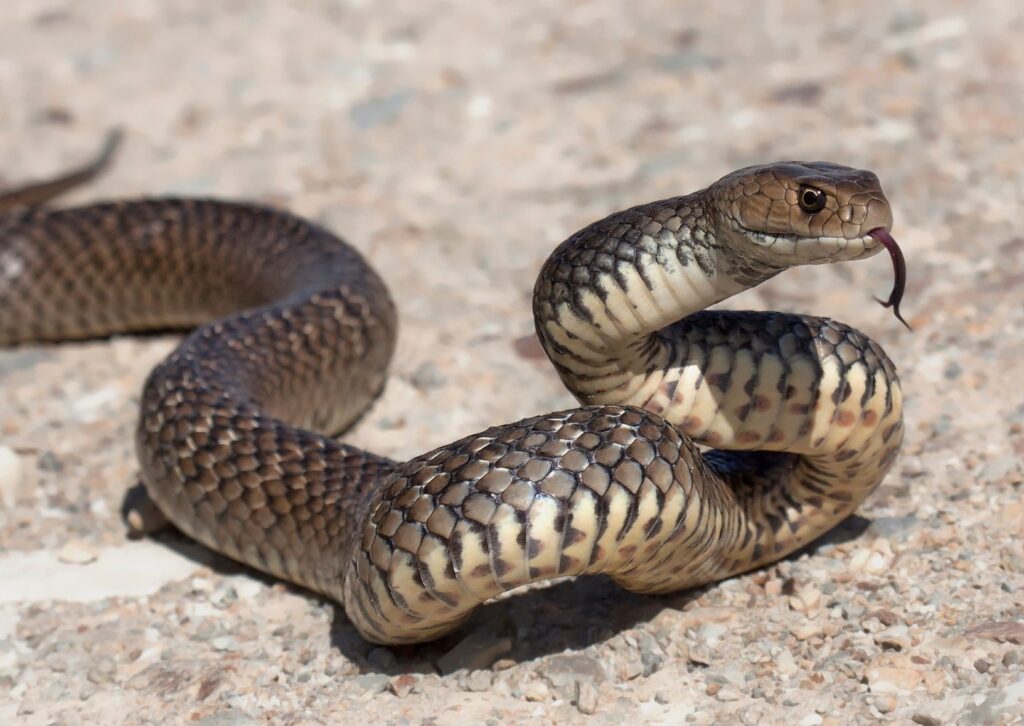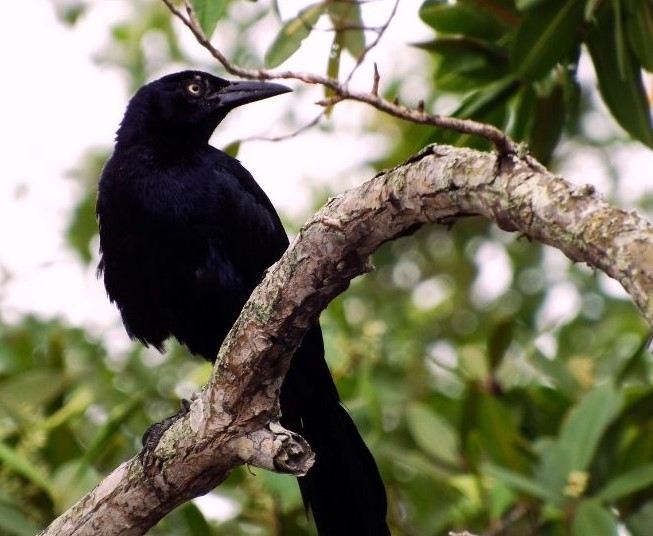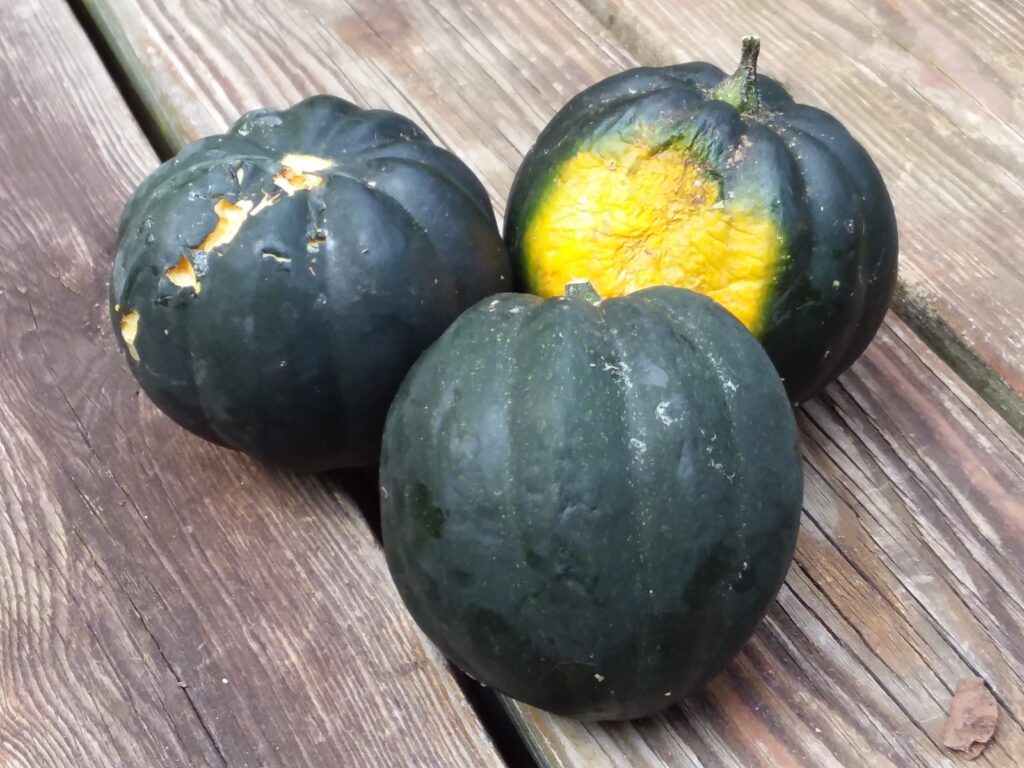(And other outdoor calamities)
Robert’s review: The tiny crunch of the fuzzy yellow bodies of the Squash Lady Beetle larva is also very satisfying as they are squashed.
)(-)(-)(-)(-)(-)(-)(-)(-)(-)(-)(-)(

But we need them!I live in a beautiful place. I can sit outside on my back deck, sipping my tea and admiring the beauty of my yard. I get plenty of sunshine and fresh air. Sometimes I read a book as I drink my chai, sighing contentedly…until the bees arrive.
With outdoor spaces come outdoor nuisances, especially in the summer. Mosquitos, spiders (though they seem to like the indoors as well), bees and bears. While I have yet to see a bear in my back yard, a common sight in many Asheville neighborhoods, the bees come around, attracted to my chai. They hover around the cup in my hand and are curious enough to swarm around my hand, knees and face. This puts an unpleasant damper on my outdoor recreating. Swatting at them seems detrimental. A gentle blowing of air in their direction distracts them, but only momentarily. Their persistence puts me in a huff and I have to close my book and, precariously balancing book and tea, head indoors.
Pests live among us where ever we choose to reside. Some of them are just pesky distractions while others are outright dangerous. Snakes own a special place at the top of the hazardous creatures list. Snakes seem to love a warm spot. If that spot happens to be in my yard or I encounter one lazily sunning itself on my patio, all the fuzzy warmth I had leaves my body. A snake must be removed from the back patio regardless of its venomous status. My instinct is to remove myself from the immediate vicinity and cower indoors until it moves on. I’ve seen people capture snakes and, if one of those brave souls is within earshot when I find a wriggly creature, I would have them come running over to: a) stand close enough to identify the venomous-ness of it—so I know how terrified I should be, b) capture it with a very long implement, say a hoe or a rake, and c) find it a better home. Otherwise, I drag the dog to the back door and we hide inside for a while. Often, I’ll throw something at the snake to scare it off before I retreat.

Screaming optionalIf you are sitting comfortably in the safety of your home and thinking I should teach myself to identify the venomous snakes of my region, I would need to explain to you that this has been accomplished for every state in which I have resided. A snake’s primary weapon is surprise. Surprise and fear. So, without continuing on like a Monty Python sketch, when your heart stops due to surprise and fear, your brain does not retreat to its reference room to identify the level of threat with any sort of rationality. Well, not mine anyway.
For example, while hiking in the Texas hill country, as I stepped on a rock, I heard the telltale rattle of a nearby villain. This is the recommended action to take when encountering a rattle snake: Don’t move. The snake can sense movement better than it can see you and will strike in the direction of its runaway prey. I did not follow this advice. I was aware of it, but my primitive brain took over and I leapt straight upward as far as my adrenaline-surged muscles would allow, with a screech which brought several more people into the danger zone. The pounding of my landing feet back on the rock sent the snake slithering away toward a saner path. The screeching went on for a while longer. The revulsion might still be felt to this day, but I’m sure my fellow hikers have forgiven my behavior by now.
I am unhappy to learn that North Carolina residents suffer more snake bites than in any other state in the country. We also have the greatest number of black bears in the eastern half of the country. This seems like an unfair distribution of life-threatening animals. While snakes and bears pose threats to human life, there are other forms of life that can cause misery and ruin a good picnic or garden.

Nature's ArtistBirds. We love their beauty, grandeur and song. What we hate are birds that swoop down and peck us on the head ala Alfred Hitchcock’s The Birds. Grackles are a species which display occasional aggressive behavior. They tend to flock together in the trees which line parking lots. That’s where my nightmarish avian adventures have taken place. I once worked in a building surrounded by an attractive, tree-lined parking lot. Grackles often nested there. At certain times of the year (hatching?) these large, black birds attacked building employees and visitors by cruising at high speed toward heads moving through the lot. People often saw them coming and could duck and yelp before any contact was made. Others were not so lucky. We frequent-parking humans adopted a parking lot dash rivaling any Olympic track event.
If I parked my car in the lot for the day (every Monday through Friday), I would return to find a Jackson Pollack masterpiece in bird-shit white all over my vehicle. Grackle season brought joy to car washing enterprises nearby. Do birds take great pleasure transforming the landscapes below? When we lived in Texas, near the bayou, we discovered that somebody was white washing the Buddha statue in our garden. After scrubbing it off a few times, we finally thought to look up. In the tall pine limbs above, we discovered a nest of herons. Once the babies hatched, we could hear the peeps and squeaks. Later, little tufted heads appeared. We forgave the heron family for their mess and were rewarded by their return to the same nest the following years. We moved the Buddha to a shit-free location.

Teddy bears' picnicWe have a book entitled Attracting Birds to Southern Gardens, which suggests luring birds your way by planting trees, shrubs and flowers which local birds find favorable to their palates and sense of décor. Frankly, most people just hang up a bird feeder (aka bear piñata) and then spend much more time warding off the skullduggery of our neighborhood mammals. We’ve got some pretty chubby squirrels around here. Our avian population just seems to like hanging out here without too much fuss on our part.
Gardeners in our area also suffer from the rummagings of our local critter inhabitants. Birds peck at our tomatoes, squirrels and chipmunks nibble on our squashes, and we often find large impressions in our planted areas which leave a mystery as to who exactly disassembled the surrounding plants we had hoped to harvest. We have suffered total strawberry annihilation by unknown guests every season. Some neighbors cage up their strawberry plants like precious jewels, but we are lazy gardeners who have enjoyed one or two strawberries at most each summer. That makes them all the sweeter.
The tiniest invaders seem to love our crops as well. Squash Lady Beetles and their larvae stripped our acorn squash and zucchini plants with devastating results. We instituted a system of find and squish throughout the summer, hoping to have enough leaves to keep things going until the fruit was big enough to be edible. Every day we turned over the leaves to find their fat, black-spotted yellow bodies which we sent to bug heaven with a pinch of the fingers. The zucchini succumbed to the inevitable without producing any offspring, but we reaped three miniscule acorn squashes at summer’s end. We haven’t tried to eat them yet.

This year's bountyNow, as I sit on my back deck, reading the latest best seller, I can hear the buzz of our precious bees (pollinators in good-standing) hovering over the dregs of our veggie plants. I am content with the call and song of birds in our trees and the sound of crickets chirping in the grass. The snakes are hiding under the leaf cover beginning to form near the compost pile. The small, nonthreatening mammals are staying out of sight for fear of my dog. All is well as I sip my chai un-accosted on a late afternoon of a fine day at summer’s end. I can feel autumn in the air.
Enjoy these moments,
Cheryl
Guest Editor Robert has often been my companion in the battle of the great outdoors. The local critters left plenty for us to harvest and eat this summer and beyond.




Oh the vermin!! Rats are the worst. having bird cameras is unnerving! -we see the night time action. And i’m sure it was a rat that ate my new petunia plants. 😡
Another fun to read blog!
I’m not ready for that level of garden surveillance! I’m pretty sure it would lead to a nasty groundhog grudge.
for sure!! AND we had a complete back yard of grackles visit yesterday! oh my!! 😱
As a bear I most protest your character assassination of me and my fellow bruin. It is folks like you that causes much unrest in the community. We were here before you built your silly highrise dens! Perhaps if you got to know us better you’d not be as judgemental. Now please excuse me while I go bust open a couple of bee boxes in order to have a little snack out in my backyard!!
Oh Bill Bear, Your brethren love to swat at our bird feeders, but your presence is the most exiting thing that happens here in our little mountain town.